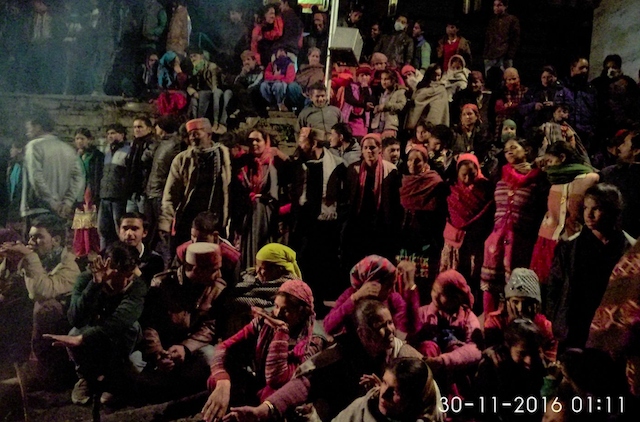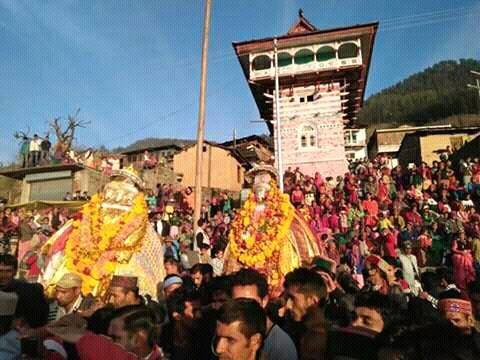Shimla: In some interior areas of mountainous Himachal Pradesh, Diwali celebrations have begun only now, almost a month after the country celebrated the Festival of Lights.
The reason: Some believe the news of Lord Ram’s return to Ayodhya reached late in these parts. Others say this is the time of the season when they stop cultivating their fields owing to the onset of harsh winter.
Diwali traditionally celebrates the triumph of good over evil and is widely believed to mark the return of Lord Ram to Ayodhya after vanquishing the demon king Ravana.
In pockets of Himachal Pradesh, where the celebrations started on Tuesday night and will continue for three days, the festival is known as Buddhi Diwali (or dark Diwali).

“Buddhi Diwali was celebrated throughout the (Tuesday) night and this time it was held in Thata panchayat,” local resident Hem Singh Thakur said over the phone.
He said the locals, especially the womenfolk, dressed in traditional attire, danced throughout the night in Thata village in Balichowki tehsil in the picturesque Seraj Valley of Mandi district.

The men, holding flaming pine and oak twigs to show their dominance, also danced amid the beating of drums and playing of trumpets.
Thakur said that on Wednesday the locals exchanged sweets and offered community feasts and prayers to appease the local deity, Shyati Nag.
Octogenarian Bhrigu Ram said they never celebrated Diwali. “This (Buddhi) Diwali has been the only one celebrated in this area for centuries. For the past few years, the new generation has started bursting crackers on Diwali.”

Celebrations for Buddhi Diwali also started in the Ani, Nirmand and Banjar areas of Kullu district, Shillai in Sirmaur district and Chopal in Shimla district. It’s also considered an animal sacrifice festival — in spite of a High Court ban on the practice.
In each area it’s celebrated in a unique traditional manner.
In Kullu district, the festival is celebrated to commemorate the killings of demons Dano and Asur who resided there in the form of snakes. Hundreds of goats, sheep and buffaloes are sacrificed to invoke gods.
Previously, as per tradition, the villagers would take the animals to a nearby temple where the sacrificial ceremony was performed on ‘amavasya’, or moonless, night of the dark fortnight of a lunar month.
The severed heads would be offered to the gods and deities and each animal’s body is taken home for cooking. The feast is shared among the villagers.
However, since the High Court ban in 2014 on the sacrifice of animals for religious purposes, most of the locals prefer to perform the sacrificial ceremony at their homes despite the government doing its best by educating the people to shun the practice.
In some areas of Shillai in Sirmaur district and Chopal in Shimla district, locals raised livestock, mainly goats, throughout the year for performing the sacrificial ceremony on the first night of the festival.
“Sacrificing an animal on festivals to appease the gods is a centuries-old tradition and custom. This ensures round-the-year protection and prosperity of our crops, livestock and family,” said Sushma Devi, an octogenarian residing in the Shillai area.
She said the festival also marked the onset of the harsh winter season. “So we have now stopped cultivation for the next three months. It’s time to relax,” she said.
Her husband, Naresh Verma, said the meat stored during the festival would be consumed during the winter.
The Buddhi Diwali festival also has a brighter side. The villagers clean their houses, purchase utensils, bangles and clothes and cook traditional dishes.
A seasoned journalist with over two decades of experience, Vishal writes on a wide range of subjects which include biodiversity, climate change and links between environment & development. He also covers politics and other developments in Punjab and Himachal Pradesh. He lives in Chandigarh & Shimla.



